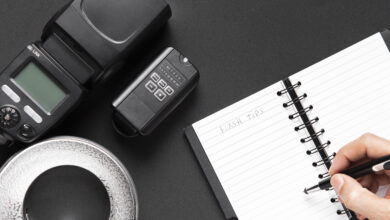Understanding “Hinaaminen”: More Than Just Towing

If you’ve ever been stuck with a dead car on a freezing winter morning or needed to pull a boat across a lake, you’ve probably experienced “hinaaminen” firsthand—even if you didn’t know that’s what it was called. The Finnish word “hinaaminen” translates to “towing” or “pulling,” but there’s a lot more behind the concept than simply dragging something from point A to point B. Let’s dive deeper into what hinaaminen really means, how it’s used, and what you need to know whether you’re dealing with cars, boats, or even psychological metaphors.
What Does “Hinaaminen” Actually Mean?
At its core, hinaaminen is the Finnish word for towing or pulling, particularly in a mechanical context. But in practice, it covers a broad range of scenarios—from everyday car troubles to specialized heavy-duty operations.
In day-to-day Finnish, if your car breaks down, you’ll likely call for a hinauspalvelu, or towing service. That’s where hinaaminen begins to feel real—your vehicle’s not going anywhere on its own, and you need help. The process involves attaching your car to a tow truck with a tow rope, chain, or hydraulic system and hauling it to a garage or home.
But hinaaminen isn’t just for broken cars. Boats get towed too, especially on lakes and in coastal areas where motors can fail or weather gets rough. In the maritime world, towing can be a matter of safety, not just convenience. Tugboats, for instance, are powerful examples of hinaaminen in action.
It’s also worth noting that the word is used metaphorically in some contexts. In Finnish idioms, someone might be said to “drag along” others—emotionally, mentally, or socially. That usage is more abstract, but it still fits with the core idea of pulling or carrying something or someone.
Hinaaminen in Everyday Life: From Cars to Canoes
So, how often do people really encounter hinaaminen in their daily lives? More often than you might think—especially in areas where driving is a way of life or where waterways are common.
Let’s start with cars. Car towing might sound like a rare event, but it’s actually quite common—especially during harsh winters. Batteries die. Tires go flat. Engines give out. In Finland and other northern countries, these are everyday problems. And when they happen, a reliable towing service becomes your best friend. Most drivers, sooner or later, find themselves in need of a tow, making hinaaminen a normal (if inconvenient) part of vehicle ownership.
Then there are the more recreational forms of towing. Ever pulled a canoe or kayak behind a boat? That’s hinaaminen too. Jet skis, wakeboards, and even inflatable banana boats fall into this category. This kind of towing is less about necessity and more about fun, but it still follows the same basic principles: pulling something safely and steadily behind another moving object.
Even people can be towed—think of someone on skis being pulled by a snowmobile or a wakeboarder gliding behind a speedboat. It’s all part of the same concept, just in a more adrenaline-fueled format.
Technical Aspects of Hinaaminen: It’s Not Just Hook and Go

Now let’s talk tech. Hinaaminen might sound simple, but the reality involves a fair bit of skill and understanding. Whether you’re a driver dealing with a disabled vehicle or a professional operator towing industrial equipment, there are rules, techniques, and tools that need to be followed.
First and foremost, safety is everything. The connection between the tow vehicle and the item being towed needs to be secure. Tow ropes or bars must be rated for the correct weight, and attachment points have to be checked to avoid snapping or slipping. The angle and distance between vehicles or objects also matter—too much slack can cause jerks or accidents, while too much tension can stress the towing equipment.
Another key consideration is control. Towing changes the way a vehicle handles. Braking takes longer, turning becomes wider, and acceleration is slower. That’s why towing drivers often need special licenses or training, especially for larger loads like trailers or caravans.
Also, modern vehicles come with built-in towing modes and electronic systems that assist with balance and braking. These features make towing safer and smoother, but they still require a human who knows what they’re doing. Trust me—you don’t want to “wing it” when it comes to towing a two-ton trailer on icy roads.
Hinaaminen Beyond the Physical: Emotional and Social Pulling
Here’s where it gets interesting—let’s take hinaaminen beyond its literal meaning and explore how it applies metaphorically. In Finnish (and even more broadly), the idea of pulling or dragging someone can describe emotional, mental, or even social effort.
Think about it—have you ever felt like someone was “dragging you along” through a group project, a toxic relationship, or a stressful situation? That’s metaphorical hinaaminen at play. One person doing the heavy lifting while others tag along, often unwillingly or passively.
In psychology, this can relate to codependency, burnout, or mental fatigue. People who are constantly supporting others—emotionally, financially, or socially—might feel like they’re towing a metaphorical weight every day. While the word hinaaminen isn’t commonly used in English this way, it perfectly captures the sensation of being overburdened or responsible for others in an unequal dynamic.
It’s a powerful metaphor. Whether you’re towing a broken-down car or emotionally carrying a relationship, the strain is real. Recognizing this kind of “emotional towing” is an important step toward setting boundaries and finding balance in your life.
Legal and Ethical Considerations in Towing (Hinaaminen)
Believe it or not, there are actually legal regulations governing how and when hinaaminen can occur. In most countries, towing on public roads requires adherence to strict rules—not just for the safety of the driver, but for everyone else on the road.
For example, if you’re towing a vehicle using a rope or chain, there’s typically a maximum allowed distance, and reflective indicators or signs must be displayed. Improper towing can lead to fines, accidents, or even criminal charges in extreme cases.
Professional towing services also operate under regulations. They need licenses, insurance, and the proper equipment. There are also ethical concerns—some tow companies have been known to charge outrageous fees or perform unauthorized tows, leading to disputes and lawsuits.
In Finland and other Nordic countries, towing laws are particularly strict due to weather conditions. Ice and snow make towing inherently more dangerous, so regulations around traction, lighting, and driver qualifications are well enforced.
It’s also considered poor etiquette (if not illegal) to block access for tow trucks or ignore towing zones. Parking illegally in areas marked for emergency access or snowplow routes could mean getting towed—whether you like it or not.
Final Thoughts: Why Everyone Should Understand Hinaaminen
Whether you’re a driver, a boater, or someone navigating complex emotional dynamics, understanding the concept of hinaaminen is surprisingly useful. It’s not just about ropes and trucks—it’s about connection, responsibility, and knowing when and how to move forward with help.
Even if you’re never the one doing the towing, chances are you’ll be the one being towed at some point—physically, mentally, or metaphorically. Recognizing what it takes to pull something (or someone) safely and respectfully is a life skill that goes well beyond the road.
So the next time you hear the word hinaaminen, don’t just think of it as a mechanical act. Think of it as a reminder: that we all carry weight, and sometimes, we all need a little help moving forward



